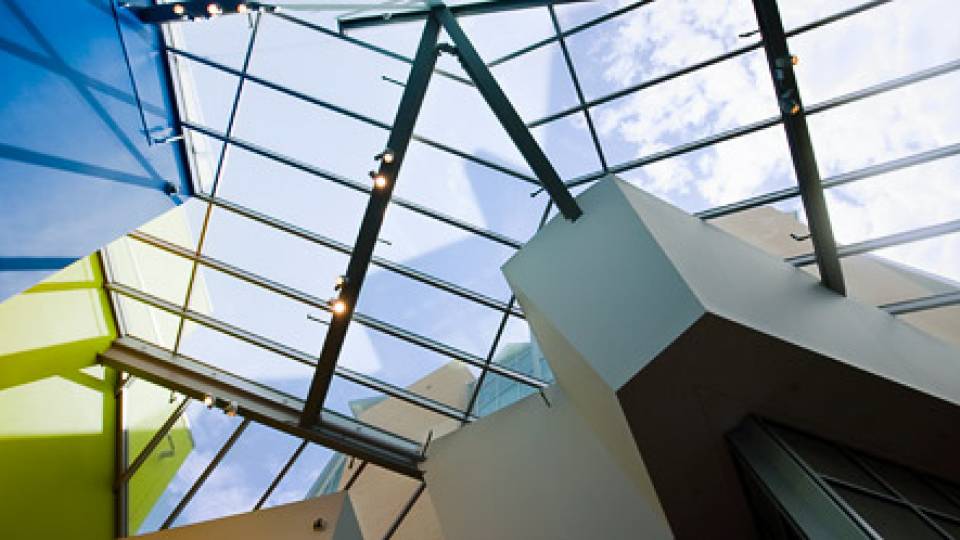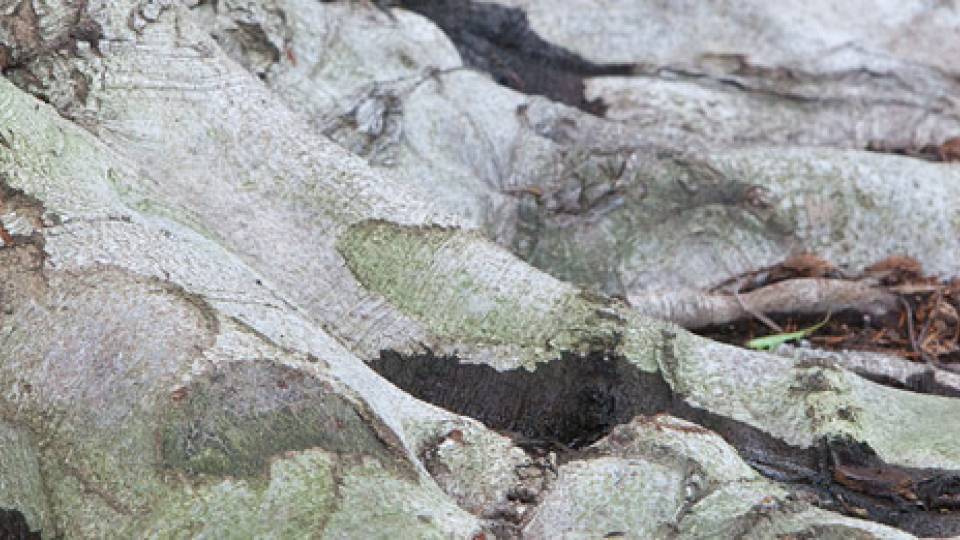The new Lewis Library at Princeton University opens in time for the start of the academic year on Thursday, Sept. 11, 2008. Designed by Frank Gehry(Link is external), the multi-story, 87,000-square-foot science library combines many of the University’s science collections and technology spaces, and also includes study, research and classroom space.
• Project description: Research and science library
• Location: Corner of Washington Road and Ivy Lane on the south end of Princeton’s campus
• Architecture style: Modern
• Architect selection: Gehry Partners, LLP, November 2001
• Construction commencement: November 2004
• Construction completion: August 2008
• Project size: 87,000 gross square feet
• Building materials: 23 rolls of stainless steel comprising 88,000 pounds of embossed stainless steel panels from the Swedish company Outokompu; 400 tons of steel; 35,000 square feet of clay brick weighing 620 tons from IXL Canada; 26,000 square feet of glass; and 11,000 square feet of stucco from Portland Cement Plaster
• Windows: 1,100 square feet of punched window openings; 24,900 square feet of aluminum glazed curtain wall
• Highest point: 105 feet at its highest point, the south side of tower grade to top of parapet coping
• Number of stories: Four in the tower; three in the Ivy Lane wing; and two in the Washington Road wing
• Building occupants: Initially will house the astrophysics, biology, chemistry, geosciences, mathematics, physics and statistics library collections, the map collection and the digital map and geospatial information center, as well as the Office of Information Technology’s Education Technologies Center and New Media Center, Broadcast Center, and the computational science and engineering support group for Computational Science and Engineering and the Office of Information Technology
• Student study and classroom spaces:
* Six classrooms: five on level 100 off of the lobby, and one electronic classroom on level 200
* Five seminar rooms: one on level 100 off of the lobby, one on level 200 and three on level 300
* Nine group study rooms: two on level 300 and seven on level 400
• Amenities: Book stacks or high-density shelving, audio and video studio, atrium, academic classrooms, librarian offices and workrooms, reading and seating areas, library electronic classroom, library seminar rooms, computer clusters, study carrels, group study rooms, computer server room, and a subterranean connection to Fine Hall, McDonnell Hall, Jadwin Hall and the new chemistry building, which is now under construction
• Project team: Gehry Partners, LLP, design architect; Barr & Barr Inc. Builders, general contractor and construction manager; Desimone Consulting Engineers, structural engineers; Cosentini Associates, lighting and mechanical, electrical and plumbing; Krieger & Associates, Architects, interiors consultants; Quennell Rothschild & Partners, LLP, landscape architects; Acentech Inc., audiovisual and acoustics consultant; Van Note-Harvey Associates, PC, civil engineers
• Building name: Named for Peter B. Lewis, the chairman of the board of Progressive Corp., one of the nation’s largest auto insurers, a Princeton University trustee and a member of the class of 1955. Lewis made a gift of $60 million in 2001 toward the construction and programs
• Landscaping highlights: The following trees were transplanted from the library site to other areas on campus: one dawn redwood was transplanted to the University’s Graduate College, and 10 other trees of varying varieties -- sugar maples, red maples and emerald queen maples -- were transplanted to the main campus to accommodate the new building and construction activities. New trees planted are as follows:
* 7 red maples (native species)
* 2 sugar maples (native species)
* 1 lace bark elm
* 4 white fringe trees
* 12 sweetbay magnolia (native species)
* 10 green Hawthorne
* 18 sassafras (native species)
* 3 honey locust
* 3 longstalk holly
* 23 inkberry holly



